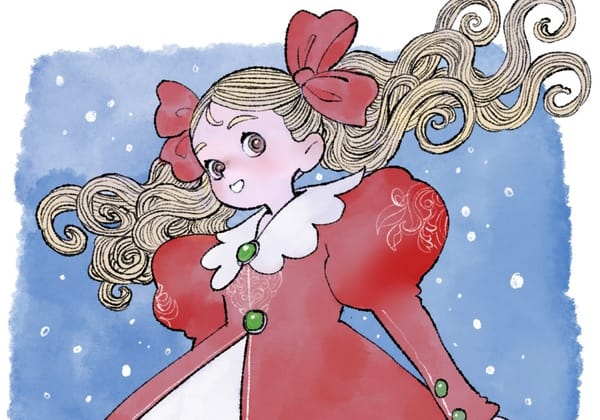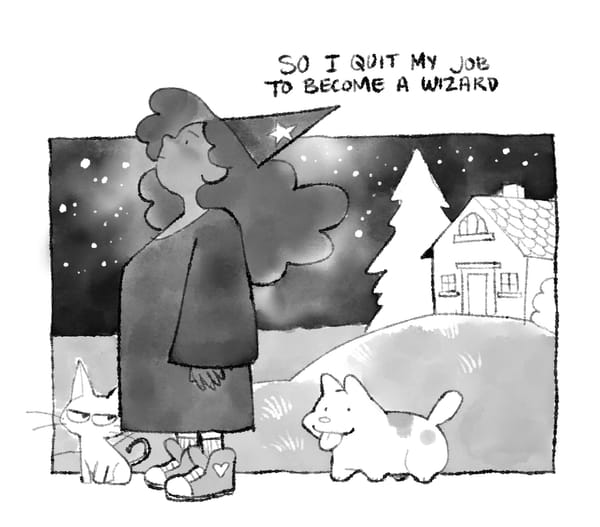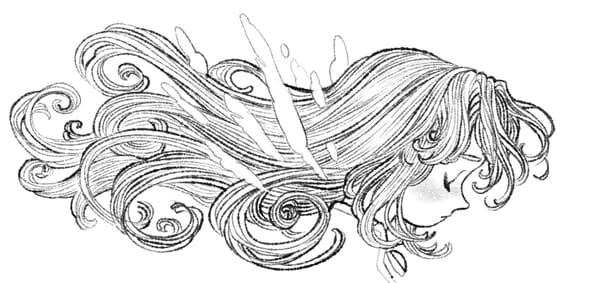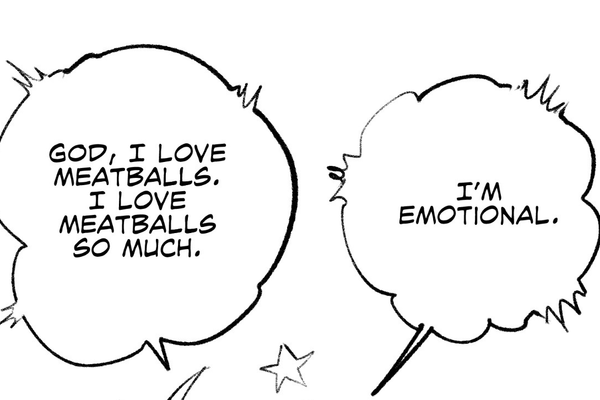The Magician (and the responsible use of magic)
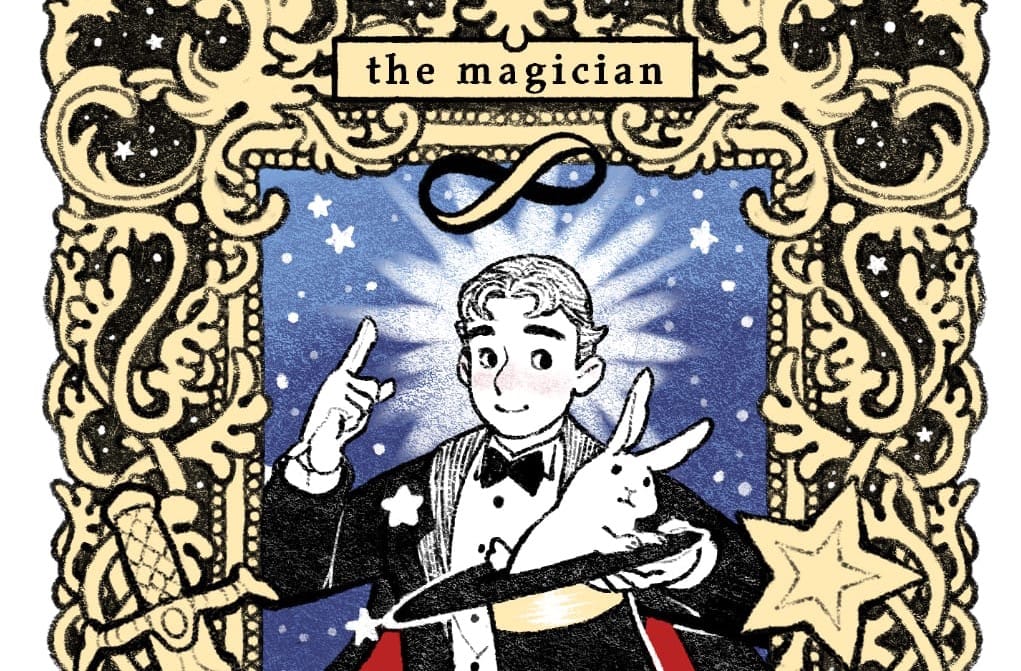
I don't really have a naming convention for the tarot decks I always start and sometimes finish, but I sort of gravitate toward mundane names. I'd love for tarot to be a completely non-intimidating thing that people can play with, so I might try to figure out a name that's slightly less cosmic? After Star Spinner Tarot, I started to get the feeling that cosmically-named decks start to feel more self-important than I'd like my decks to be. It's part of the vibe on which the cards are sold. What's the mystery and magic of a deck that could get a fledgling witch to pick one up and hold it to their heart?

I once had an editor object to this imagery in one of my decks because they thought that this Magician image was too "modern," and I remember in Star Spinner, which sold very well, I explicitly included flapper imagery for the Page of Coins. The Star Spinner deck was, I think, sold on the novelty of the four different iterations of The Lovers because I was about twenty-four at the time (I started drawing that deck a full decade ago, holy crap) and was very enthused about reclaiming and critiquing iconography.
I remember there was some gentle pushback from the publisher of Star Spinner about my use of the term Orientalism to describe the imagery in the Rider-Waite-Smith deck published in 1909. I'm certainly no academic, but my art history focus while I was in college was ephemera from the turn of the 20th century. Fantastical images from the fin de siècle were informed by the popular imagination of the time, like in all times, much the way anime and, by extension, Japanese culture were sort of clumsily introduced and misappropriated into the American visual imagination around the turn of the 21st century. It falls into that fascination with the Other, which happens all the time. The Star Spinner Tarot deck was my youngling way of using the form to critique, I guess, and I was explicit about the ways the RWS deck drew upon fantasies of an exoticized Egypt that was so popular in all those magical secret societies, like the one that commissioned the RWS from Pamela Colman Smith.
The turn of the 20th century was also just a time of people relishing in fantasy and science fiction in new and fascinating ways. The city centers of the United States off the heels of the The World's Columbian Exposition in 1893 must have been wild! To give you a sample platter, this was around the time the use of colored lights in mechanical window shopping displays that influenced L. Frank Baum's conception of the world of Oz was popularized! There were exciting technological advancements in color printing, screen-printing, and offset printing for mass production! Winsor McCay was making Little Nemo and animating Gertie the Dinosaur, playing an enormous part in the advent of American Animation! The film industry was finding its feet, beginning the slow transition from silent films to talkies, and relocating its center from the East Coast to the West!
To my mind, drawing the Magician card in a tuxedo that would have been period appropriate to the time when the RWS was first commissioned was a nice way of nodding to the origins of the most popularly used tarot deck in the world while moving away from its racist iconography. Unfortunately, this seemed to dilute the "mysterious magic vibes" of a tarot deck for this editor, and I didn't have the mileage to say, "Actually those mysterious ye olde magic vibes of the tarot are because of racism," so I declined to pursue publication of that small deck and went on to work on this one instead, in my spare time, between comic pages. I'm usually not pressed about editorial feedback, but it was the first instance where I felt like an editor was incurious about imagery. And why would I want to proceed on a visual project with someone who was not deeply invested in the project's visual lineage?

I am currently obsessed with Jiří Trnka's work as an illustrator. I'm sure I've mentioned him before. He's a Czech animator who also worked on a ton of children's books, and I've taken to hunting down those books he illustrated.


I love the looseness and whimsy of his use of wet media. I love the confidence of letting all that ink wash around so freely on paper. It's so different than how I like to work, and it fascinates me. I love work that has entirely different aesthetic priorities from my own.


I'll post more of his work as I find them. In the meantime, I'd love to know which illustrated books visually excited you as a young person. Heck, I want to know what sorts of images and illustrations speak to you as a grown person reading this post! Let me know. I'm always on the lookout for fun illustrators across time and genre.


